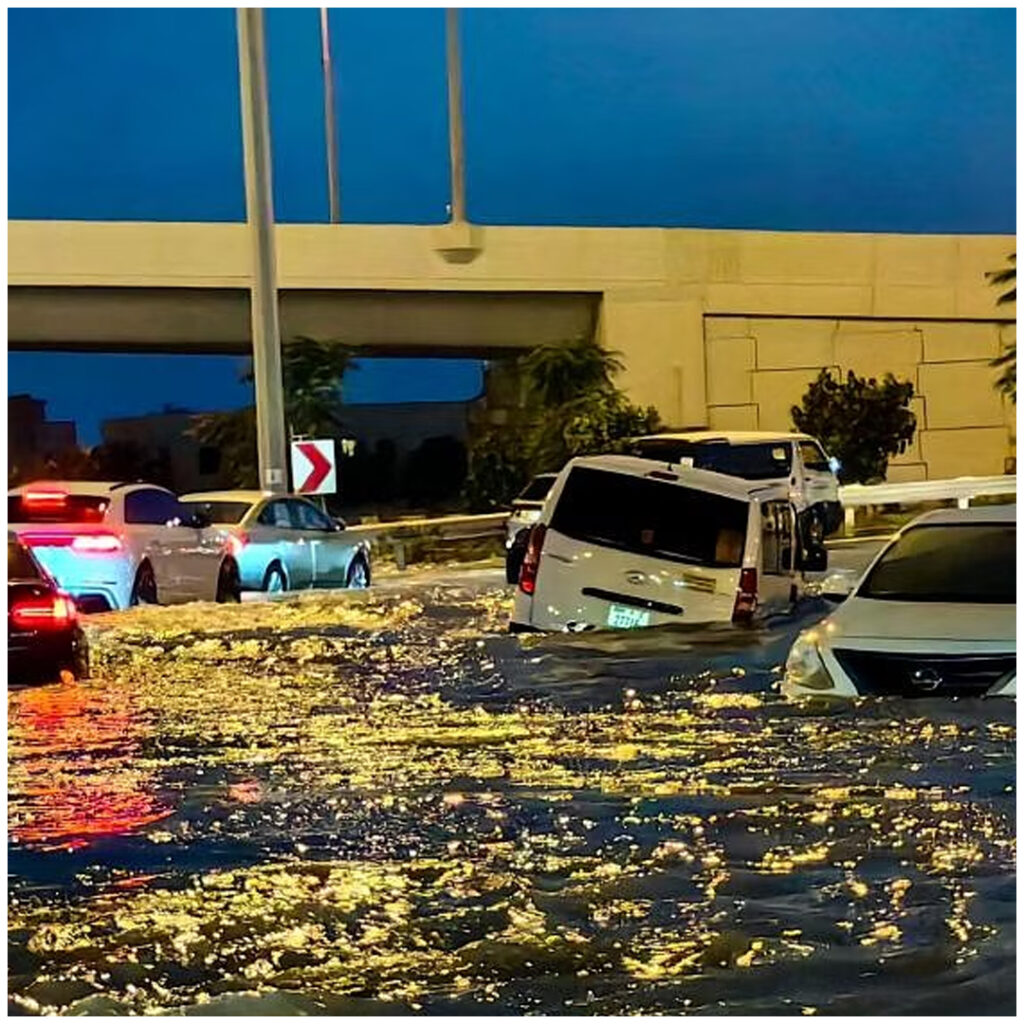The United Arab Emirates (UAE) is currently grappling with an unprecedented meteorological phenomenon, as the nation experiences its most substantial rainfall in 75 years. The downpour has inundated cities, leading to chaos on the streets, with cars floating and key infrastructure, including malls, submerged underwater. This article delves into the impact of the historic rainfall on the UAE, examining the challenges faced by authorities and citizens alike.

The Deluge Unfolds:
In recent days, the UAE has witnessed an extraordinary amount of rainfall, surpassing records set decades ago. The sudden and intense precipitation has caught many off guard, overwhelming drainage systems and causing widespread flooding across various emirates. Cities like Dubai and Abu Dhabi, known for their arid climate, have transformed into scenes resembling those of coastal towns during monsoon seasons.
Streets Transformed into Rivers:
The streets of major urban centers have undergone a dramatic transformation, with water levels rising rapidly, turning thoroughfares into flowing rivers. Reports and images circulating on social media depict vehicles partially submerged or entirely afloat, navigating through the inundated roads with difficulty. The sight of cars drifting in the floodwaters has become emblematic of the extraordinary circumstances faced by residents.
Infrastructure Under Siege:
The torrential rainfall has not spared vital infrastructure, with airports, malls, and other essential facilities bearing the brunt of nature’s fury. Dubai’s international airport, one of the busiest in the world, has experienced disruptions, with runways inundated and flight operations severely affected. Similarly, shopping malls, the heart of Dubai’s vibrant retail landscape, have been forced to close as water levels rise, submerging shops and walkways.
Challenges for Authorities:
The unprecedented nature of the rainfall presents significant challenges for authorities tasked with managing the crisis. Emergency services are stretched thin as they respond to distress calls and rescue operations across affected areas. Efforts to pump out water from flooded streets and buildings are underway, but progress is hindered by the sheer volume of rainfall and overwhelmed drainage systems.
Impact on Daily Life:
The deluge has disrupted normal life in the UAE, with schools, businesses, and government offices forced to suspend operations. Residents are advised to exercise caution and avoid unnecessary travel as authorities work to mitigate the effects of the flooding. The economic impact of the rainfall is also significant, with businesses facing losses due to closures and logistical challenges.
Looking Ahead:
As the UAE grapples with the aftermath of the historic rainfall, attention turns to long-term solutions to mitigate the impact of future extreme weather events. Investments in resilient infrastructure, including improved drainage systems and flood prevention measures, are essential to build resilience against climate change-induced weather patterns. Additionally, raising public awareness and preparedness for such emergencies can help minimize the human and economic toll of natural disasters.
Conclusion:
The UAE’s battle with the highest rainfall in 75 years serves as a stark reminder of the growing threat posed by climate change. As the nation navigates through the immediate challenges posed by the deluge, there is a pressing need for concerted action at the local, national, and global levels to address the underlying causes of extreme weather events. Only through collaborative efforts can we build a more resilient and sustainable future for generations to come.






















